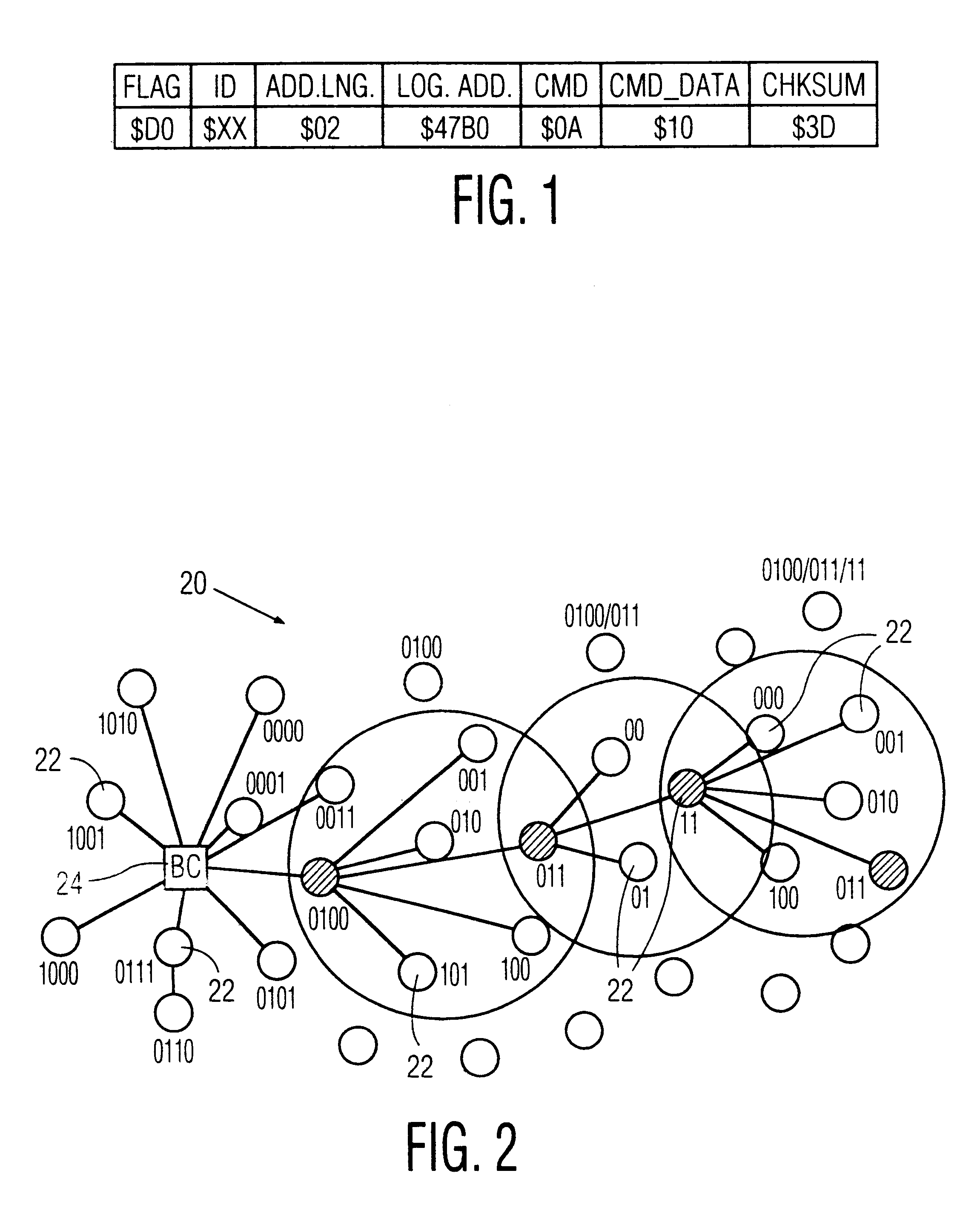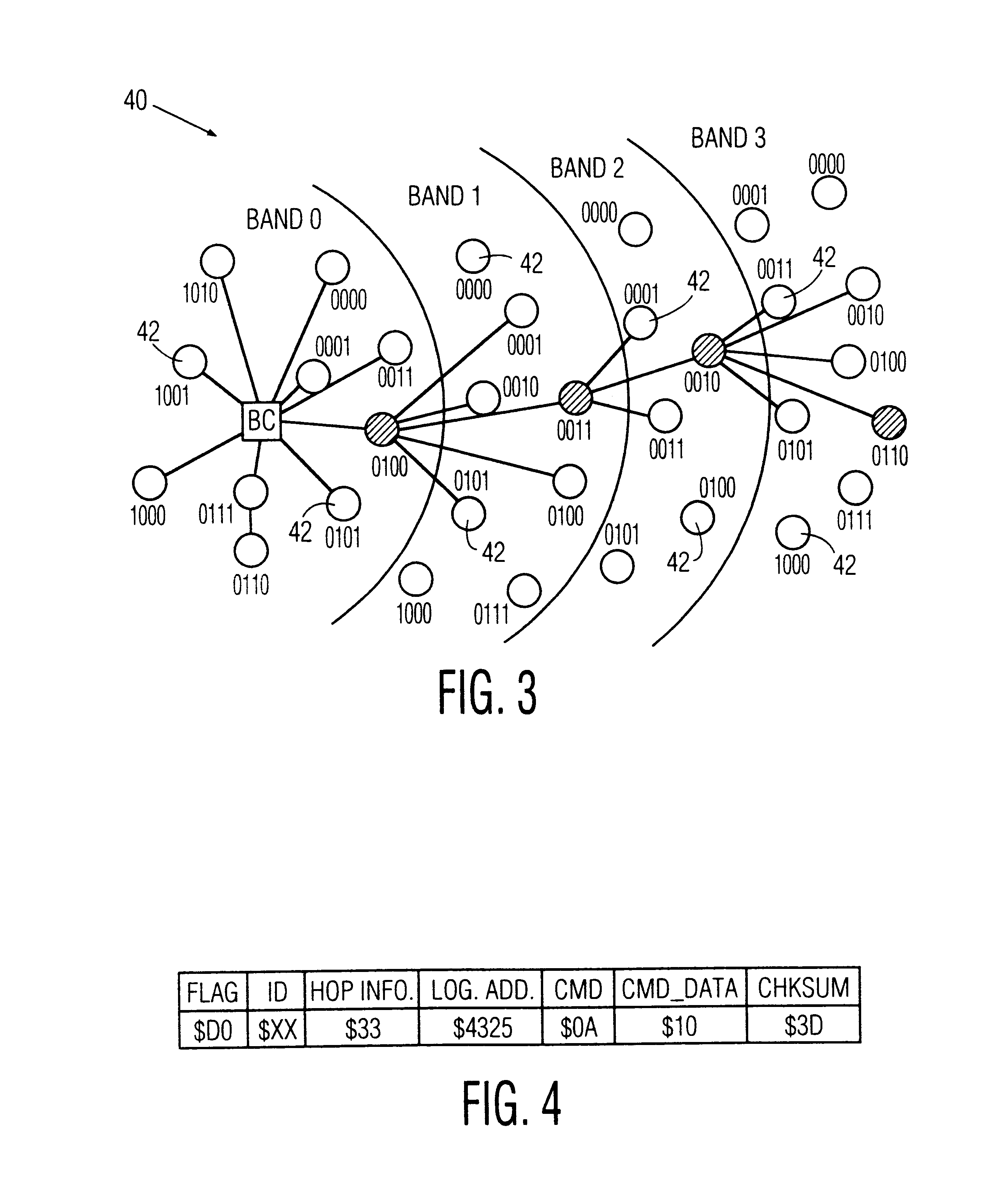Method for configuring and routing data within a wireless multihop network and a wireless network for implementing the same
a multi-hop network and data packet technology, applied in the field of wireless multi-hop networks, can solve the problems of limiting the number of different packets which can be “on the network” at any given, increasing the data traffic density in the network, and limiting the communication efficiency of the network
- Summary
- Abstract
- Description
- Claims
- Application Information
AI Technical Summary
Benefits of technology
Problems solved by technology
Method used
Image
Examples
Embodiment Construction
With reference now to FIG. 1, there can be seen the logical data structure of a typical data packet which is used in a wireless, multihop network which employs the PaST routing algorithm disclosed in co-pending U.S. patent application Ser. No. 08 / 558,447, filed Nov. 16, 1995, in the name of A. Dasgupta. A detailed description of the logical data structure of the data packet is disclosed in the above-referenced application, which has been herein incorporated by reference.
To summarize, the exemplary data packet which is used in the PaST routing algorithm includes:a) a “FLAG” byte which contains several bit fields, including a bit field which indicates the priority level of the packet, a bit field which indicates the packet type (e.g., broadcast, multicast, or unicast), a bit field which indicates the routing protocol (e.g., PaST, FHC, or PARENT) to be utilized for routing the packet, and a bit field which indicates the direction of travel of the packet, i.e., either “upstream” or “dow...
PUM
 Login to View More
Login to View More Abstract
Description
Claims
Application Information
 Login to View More
Login to View More - Generate Ideas
- Intellectual Property
- Life Sciences
- Materials
- Tech Scout
- Unparalleled Data Quality
- Higher Quality Content
- 60% Fewer Hallucinations
Browse by: Latest US Patents, China's latest patents, Technical Efficacy Thesaurus, Application Domain, Technology Topic, Popular Technical Reports.
© 2025 PatSnap. All rights reserved.Legal|Privacy policy|Modern Slavery Act Transparency Statement|Sitemap|About US| Contact US: help@patsnap.com



